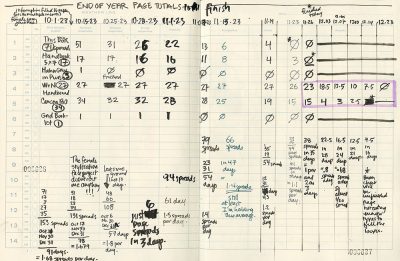
I am a log keeper a chart maker. I always have been. The chronology of tasks and events is something that has always interested me. Perhaps because we moved so often when I was a child the records I kept also kept me grounded in a quickly changing arrangement of locations and faces.
I have never tried to resist this habit and inclination. Do I look back at my running logs from the 1980s to see my distance training records? Nope. Though I did have occasion when boxing them up for storage and my most recent move, to look through them and use them to settle a climatological debate about temperature and precipitation on a day in 1983. Could I have looked up the information on the internet? Probably—but the internet has never really warmed to my search parameters and I find it easier to work with hard copy.
At the end of every year I try to finish up all the in-progress journals I have going. This chart tells me how many page spreads I have in each unfinished book, so I can then work out how many page spreads I need to finish each day remaining in the year, in order to finish all the books. It keeps me on track—sanely, with no blow out sessions, because the end of the year is too packed for those!
Often I only have one journal going, but there have been years, like 2023, when I have as many as 5 going at one time. This can be the result of a lot of factors, like the difference between a purse journal and a studio journal (size), or simply because I want to work on a certain type of paper (which usually happens if I’m finding the paper and size in a current journal not working for the experiments I want to make, say with watercolor brushes—then I’ll start a watercolor paper journal to better test the brushes).
Why keep track of your journal pages? Why keep track of anything?
For me I like to know how many journal pages I make in a year because it helps me see how productive I’ve been. I can compare totals over a lifetime of journaling and see if I had a bad year or a good year as far as productivity goes. I can then look at the entire year for indications of what went “off” in that year.
It might be, as when I was in my 20s, that I started dating someone and didn’t have as much alone time. It might be that I was involved in a major project and my energies went into that. It might be that I had some physical challenges that slowed me down.
This year, 2023 there were several physical challenges, I was recovering from respiratory issues and had little energy. As I started to mend I saw my cycling improving both in time and distance. But then I ended up in the hospital and have been on a new healing journey.
We also, after 3.5 years of in-process moving, finally relocated. We aren’t moved in completely, who knows when that will happen? Who knows where anything is, for that matter? The move was just too stop-and-go because of the constraints of Covid. I packed my studio up 3 times, thinking the move was eminent, only to unpack again because we weren’t moving yet. It was always because a contractor was behind schedule, or simply dropped out.
All of this took a ton of time. There was the physical packing and unpacking. But there was also all the time spent thinking about where something might be in all the packing and unpacking, and repacking, and unpacking. (I never found my copy of Ralph Waldo Emerson’s Essays, with all my margin notes—and I really wanted to read those essays again after getting out of the hospital. I had to buy a new book, which is sad to me because of its naked margins. I’ll just have to fill them up. But what did young Roz write?)
After four decades of living like college students I wasn’t all that surprised when a close, long-time friend walked into our new home and said, “You have furniture.”
Dick and I still chuckle over that. But the reality is furnishing the house, with both existing and new items was something that I had been doing since we bought the house four years ago. And believe me if you have never tried it, buying furniture in a pandemic is a long-drawn out process. I spent hours on-line during the past 4 years looking for things we needed, and also going out to seek them when I was physically able to. For someone who doesn’t enjoy the internet I seemed to find the one way it can work for me.
Those hours could have been journaling and painting hours, but I just wanted to push ahead and get the move accomplished. I kept saying to myself, “For now I need to do this…” while still squeezing in a little painting time each day.
I wanted the house to be “finished” when we moved in. Dick has a habit of letting home projects languish, sometimes for as long as 28 years (the 4th picture rail in my studio at the previous house). I wanted this to change.
Perhaps one of the biggest, time-consuming projects of the past 3 years was the framing and hanging of hundreds of my paintings. I bought so many used frames in a collectibles mall one day that several of the staff asked me if I was decorating “a cafe or hotel.” (I’ve written about this before—they were shocked when they discovered all I wanted was the frames.) All I’ll say is if you want quality frames made of wood, go to a collectibles mall, you’ll find hundreds of suitable frames—with intact glass that just needs a bit of a wash. And all of them have horrible artwork or yellowing prints from advertising promotions that you won’t hesitate to toss.
One of the biggest projects I tackled this year, that took me away from my journal—was the hanging of gallery walls throughout the house. It’s a small house because we were downsizing (no falling, easy cleaning!) and it’s safe to say I’ve put a gallery on every wall. (Dick helped with the hanging. I would lay everything out on large pieces of brown construction paper bought in rolls for other house renovation tasks. When I got an arrangement that fit the particular wall space, Dick would help me hang them. I have to say that with each new gallery my happiness level jumped. It was seeing things unpack. And even more important it was like walking around in my journal. While some of the paintings were originally made for shows, and were reserved or didn’t sell, the majority of the paintings—all the portraits—were made for personal fun and were often part of my loose sheet journals.
I have to explain that at least 5 of the paintings on the walls were ones I did to fill a particular frame because I needed something to fill a spot. The gallery walls was like a huge page layout design “problem” that I worked out on the walls and halls. I loved every moment of it, and I still say “hi” everyday to everyone on the walls. It makes things so festive here. I highly recommend it. (Visitors can play “Spot Alun Armstrong” and other favorite models—I think Rick Niece, a model from Sktchy, hangs in every room in the house!)
All of this is the backdrop to the journal page-spread chart.
So What About the Chart?
Sometime around October every year one of two things happens—I look down and see I’m working in five or more journals and gulp and say, “I’d better get cracking! Can I finish these?” or I realize I’m going to finish the current (and only journal) and I begin thinking about which journal I want to work in next and what is the probability of finishing it by the end of the year?
It’s simple. I index my journals. You can read about this here. I like to wrap up my journals at the end of the year because then they count in the page count of the year. Is it the worst thing if I don’t finish? No, not at all. Journals get indexed as soon as they are finished so I have access to locating those pages whether they are counted on one year or not. But the page count, as you’ll learn in the final section of this post, has some positive impact in helping me understand my whole year.
I think the chart helps keep me balanced. If I didn’t have the chart, and didn’t see how many page spreads I had left to finish in my current journals I might be inclined to pull another journal down and start it just because I want to work on a certain type of paper.
Instead, if faced with a high-page-count to fill, I’ll just keep working in the journals and pull sheets of paper down and put the results in the Loose Sheets journal box.
For someone who has kept time sheets on all projects since I was a child this seems to me the natural, and non-harmful outcome.
I have to admit that this year, with my physical health at a low, I was tempted to start a new journal when I only had a few pages left to fill in the current journals. I thought about pulling a pamphlet book of watercolor paper down and starting it. I even took a 100 page journal of watercolor paper down off the storage shelf and thought, “I could finish this in 16 days…”
I’ve done sillier things before. And one of the great things about keeping charts on your journal productivity is that you know exactly what you can do in a given situation—for instance, know if I travel with someone I know well that I can do 10 travel journal spreads in a day. If I’m traveling with people I don’t know well I’m lucky to get 6 a day finished. More forces pull on you in the latter situation. Those forces limit the time you can sketch.
It’s important if you are a journal keeper and a visual artist to know these things about yourself because you’re able to understand when you need to cull back activities and focus on work, or when you need to work less.
Starting a 100-page book to fill it in 16 days, while recovering from major health issue is not balanced and not sane. In this situation doing 6.25 pages a day would be detrimental to my health. That’s “traveling with people I don’t know well” numbers. I know how much time and energy that takes. I don’t need that while I’m mending.
It is a great gift to know your limits. That knowledge allows you to push against your limits and attain new levels of competency or excellence. But knowing your limits also reminds you when you need to seek balance.
As you can see from the chart, I didn’t start another journal with the mind to finish it. Instead I took a huge SeaWhite journal off the storage shelf and started it. (It’s not listed on the chart because there is no way I’m trying to finish it this year.)
I knew I would not be foolish enough to try and finish it. Unfortunately when I put it on the working shelf I knocked off a tchotchke and when I bent to pick it up the 2.5 pound book came down on my head! I refused to see any of that as a sign of anything but my clumsiness. (Well now and then I take it as a sign I should have tried to finish that 100-page watercolor journal as it was small and didn’t weight 2.5 lbs. But you get the idea.)
A Final Page Count
The end-of-year chart counts page spreads needing completion because I typically fill a spread at one sitting and it is mentally more comfortable for me to think of things that way. If you see a .5 on the chart that means there are that many spreads and one half-spread, or PAGE. This typically happens if I have an odd-ball page of notes at the end of a book taking up half a spread, leaving one page for drawing. The end of year chart of spreads just tells me how much more I need to do before the end of the year if I want to complete those books.
My page count is something that happens only at the end of the year. Since I run a continuous page count from the first journal of the year to the last completed in that calendar year I don’t know my page count until I finish the last book and stamp the pages. That final count tells me how I did in the year and gives me a page number count to compare with previous years and conditions.
My final journal page count for 2023 is 925. That’s OK but it’s about 200 below my average. I’ve had other years with that low a page count. What happened in those years? Well it’s funny—low page counts tended to happen in years when I was involved in creating art for shows or had another big project in the works.
That makes sense. If I look at the low page count for 2023 and remind myself what was going on this year I realize that all the efforts of the gallery walls alone were enough to bring the total page count down. And when you add to it the other aspects of life in 2023 for me the number becomes astounding; an example of what you can do with well-established productive habits.
I don’t have my Loose Sheets journal tally to add in this year because the box was “lost” in the move. (I type “lost” in quotation marks because Dick and friends keep reassuring me that the box is simply misplaced in storage. I’m not totally convinced.) But I know conservatively, just because of the loose sheets resting on my work table in search of a box, that there were over 100 Loose Sheet pages.
I do enjoy cracking 1,000 in a year. That’s the obsessive in me. Either way, I know I was close.
But what the totals really do is give me a wake up call that perhaps I need to refocus my energies from non-productive projects, or I need to focus on my health, or I need to focus on different types of projects all together (the 20 some invisible zipper pillows I made in the spring gave me great joy!)
The regular, consistent keeping of logs and totals allows you to see the totals against the totality of your entire life.
Totals are only important when you look at them in the context of your life and in relation to your goals—and in relation to all the other things that were in play at the time of striving. Totals are a way to reflect on where you’ve put your energies during the year. They provide an opportunity to make a switch based on actual data, not vague remembrances or chattering from an over-active internal critic.
The journals and the logs and the charts give me a way to check my self-awareness. They provide a guide for self-assessment to see that I’m still meeting my goals. Or they help me realize it’s time to change those goals.
Instead of seeing disappointment in not meeting or exceeding previous totals you find understanding about the whole business or busy-ness of your life.
There is great joy in realizing that something so important to you for your entire life, still lives in your life, still nurtures you. The wrap up points out that even in a difficult and challenging year I’ve found a way to be productive and find balance.
That’s the great gift of a life-long journal practice. (And also, all those charts!) It keeps you working with intention.



















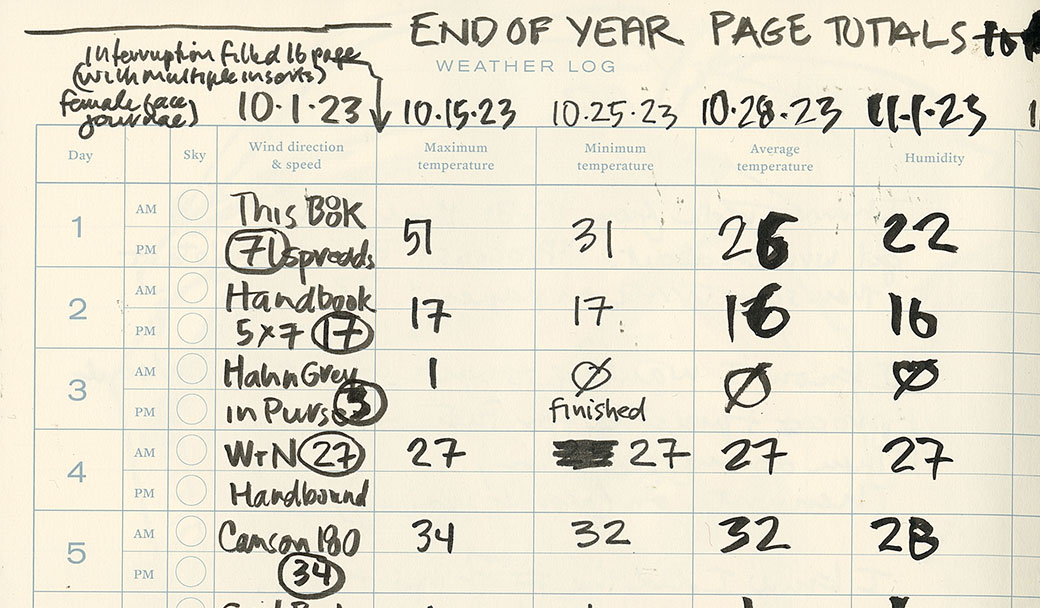
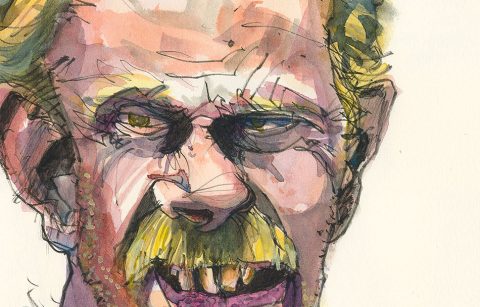
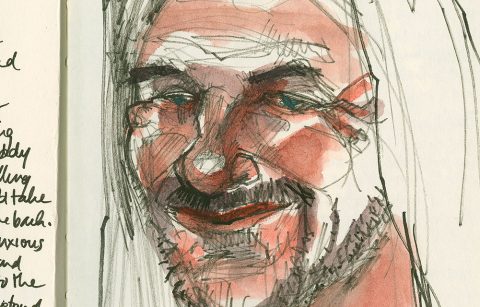
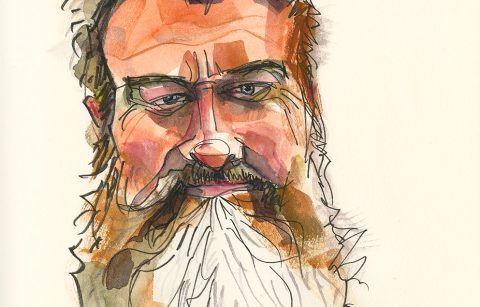
What a great way to think about the year. I’m off to make some charts too and see what my sketchbooks tell me about how things have gone in 2023.
Dave, I hope your chartmaking is useful for assessing 2023 and making a great plan for going ahead in 2024. Thanks for stopping by.
This is classic Roz in too many ways! It is an example of how lucky we are that you write, draw and share. I see this as one of the best “end-of-the-year” messages and a great motivator for next year.
Good fortune to you and those around you!
With admiration, Frank B
Frank, so glad you enjoyed this one. I ended up putting a video up too today, so check that out when you have a chance. I think that is even better than reading about the chart.
I hope you get to do some fun stuff today and that 2024 is a great year for you. Thanks for staying connected.
Happiest of brand spanking new years Roz, may all your journals be filled with your wit and dogged determination. Thankyou for sharing your journey with us. i love your work ethic and generosity in blogging. This year I got 4 personal journals done (3 x A4 and 1 A5) and 3 A4 teaching sketchbooks plus a project based one (for Animal as Object) …so I feel, looking back over my shelf of sketchbooks, that 2023 was a bigger than normal year for me. As I have another sketchbook exhibtion 2024 who knows what will come…but drawing is always in my future.
Deb, thanks so much. I have loved seeing the family get-together photos on FB. So fun. And I love that you had a big year with your journals. (All those paintings too.) I look forward to hearing about more journal shows and seeing photos. I’m so glad people are getting to look inside your process and even better understand your philosophy and message. Keep on drawing!